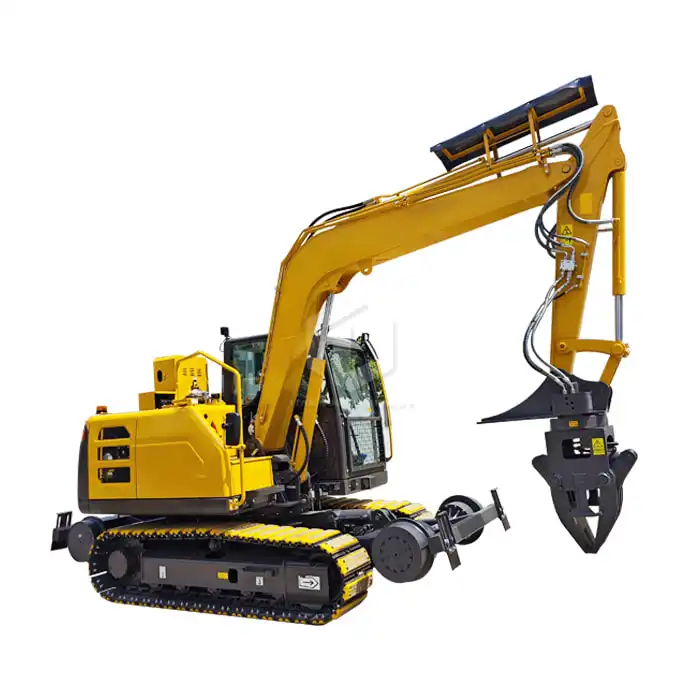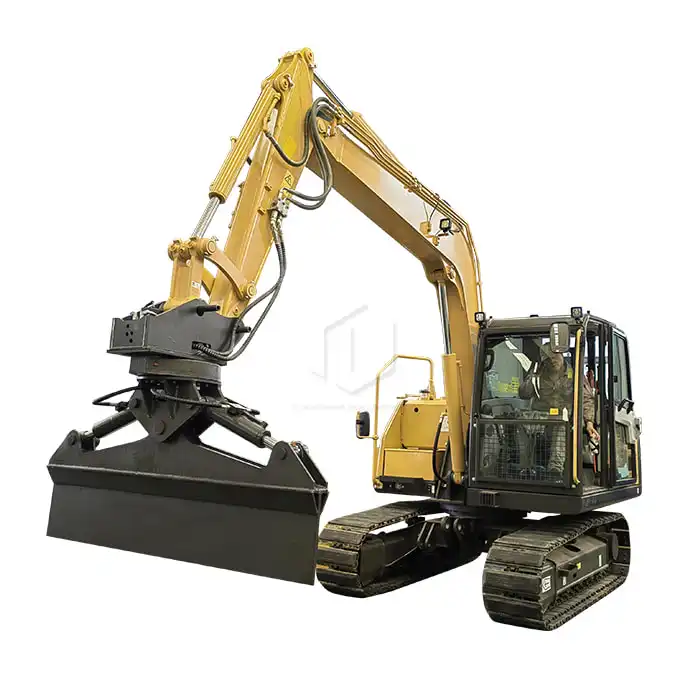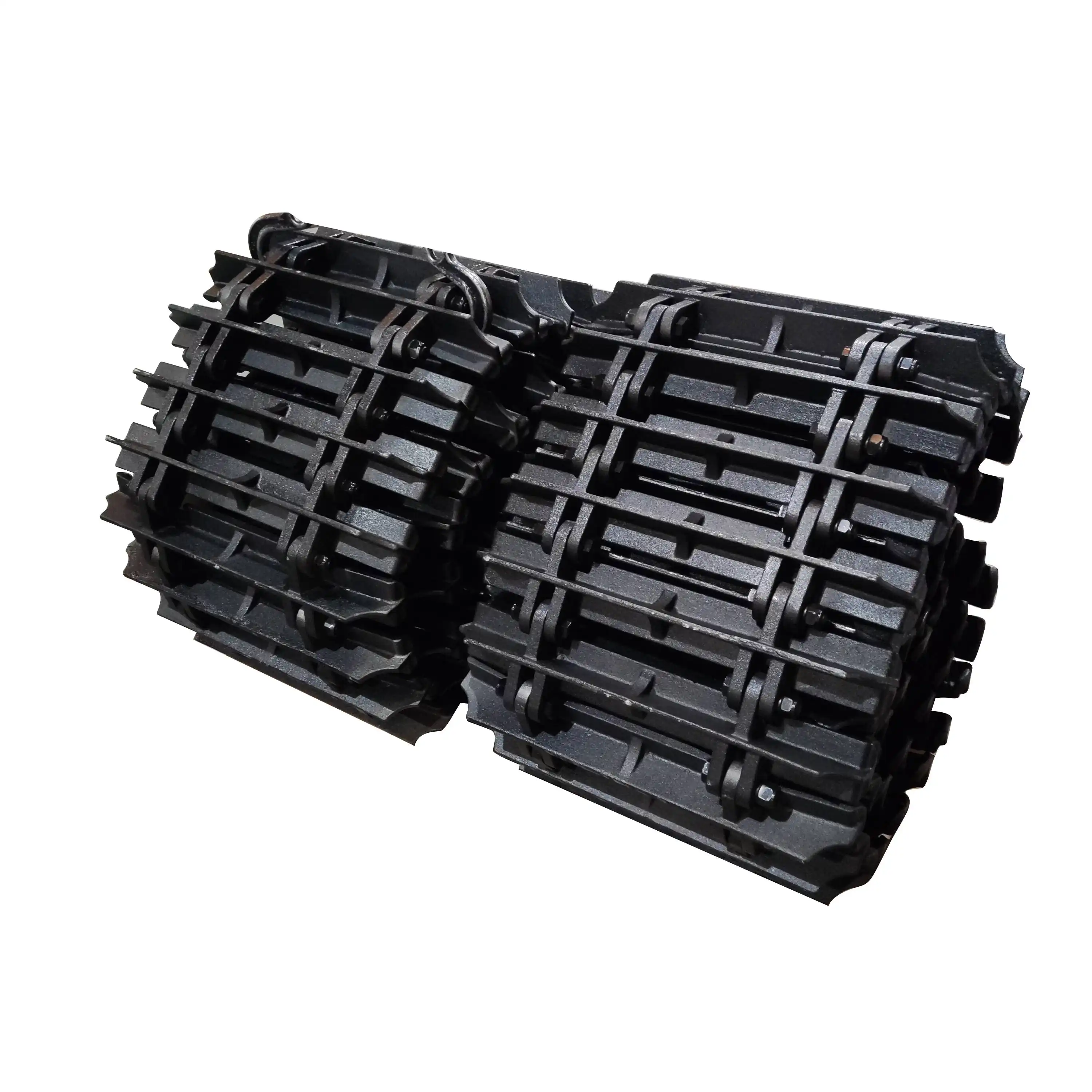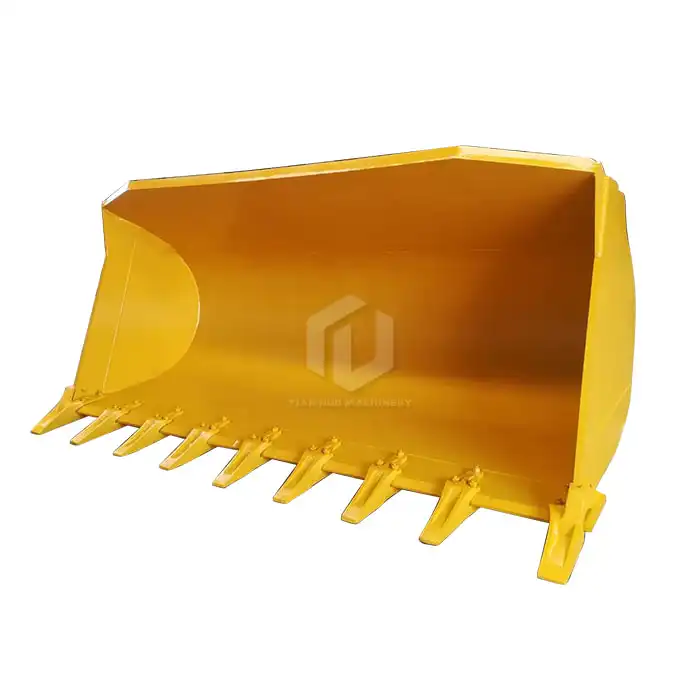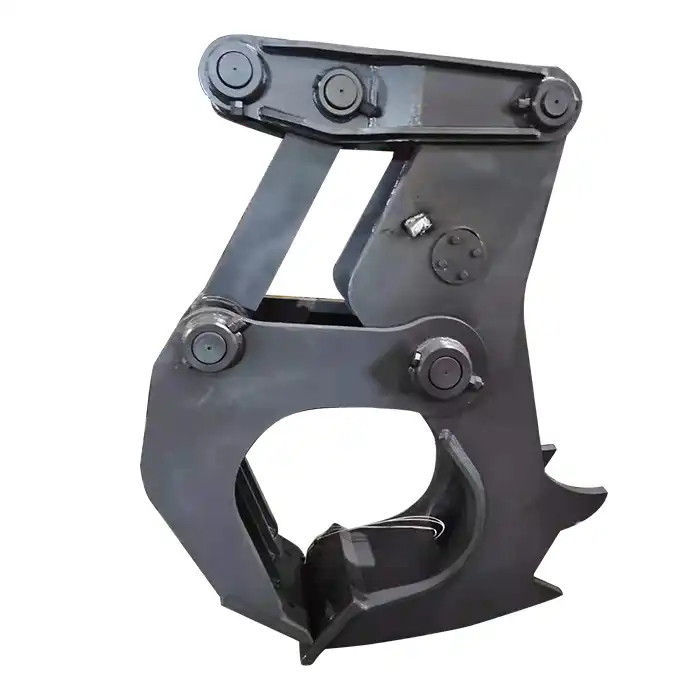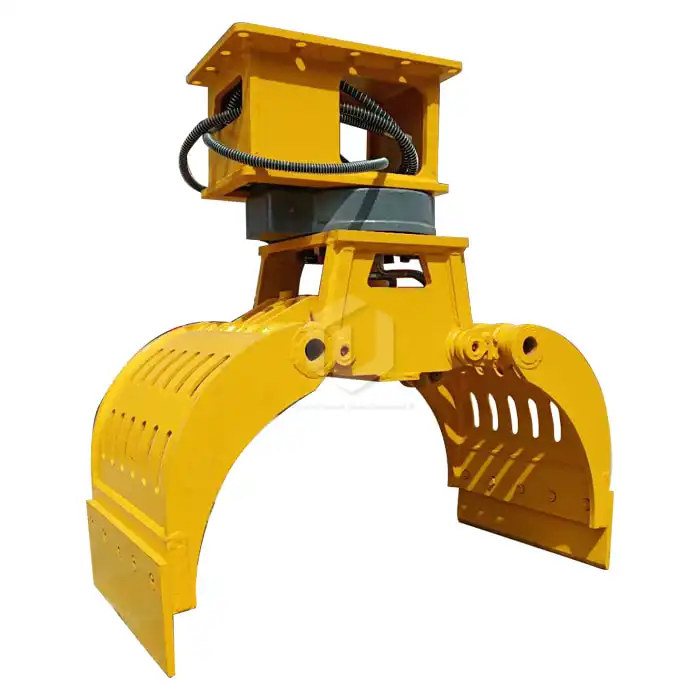What Does A Ripper Do on An Excavator?
For professionals in railway construction, mining operations, and demolition projects, the excavator ripper represents an essential productivity tool that reduces the need for explosives or specialized breaking equipment while minimizing project downtime and operational costs. The strategic implementation of rippers enables operators to efficiently prepare challenging terrain for subsequent excavation, making them particularly valuable in infrastructure development, land clearing, and site preparation across various industrial applications.
Breaking Up Hard Ground

Tackling Compacted Soil and Clay
When faced with densely compacted soil layers or clay formations, an excavator ripper proves invaluable. Unlike standard buckets that struggle with these conditions, rippers penetrate deep into compacted material using concentrated force at the tip. This penetration disrupts the compaction bonds and creates fracture lines throughout the material. Construction project managers particularly value this capability on railway expansion projects where undisturbed soil might have consolidated over decades, making it nearly impenetrable by conventional means.
The process typically involves positioning the ripper perpendicular to the ground surface, applying downward pressure through the excavator's hydraulic system, and dragging it toward the machine. This strategic movement creates tension within the compacted material, causing it to separate along natural cleavage planes. Railway maintenance crews frequently employ this technique to prepare for sleeper replacement or drainage improvement projects without disrupting adjacent track sections.
Breaking Through Frozen Ground
Seasonal challenges present significant obstacles to construction schedules, particularly in regions experiencing harsh winters. Frozen ground can delay projects for months without appropriate equipment. The excavator ripper emerges as a crucial solution during these periods, allowing work to continue when temperatures drop below freezing.
The penetrating action of the ripper disrupts the ice crystallization that bonds soil particles together. By creating initial fractures in the frozen layer, operators can systematically break up expanses of frozen ground into manageable sections suitable for removal or further processing. This capability proves especially valuable for emergency utility repairs during winter months or maintaining construction timelines despite unfavorable conditions. The hydraulic power behind modern rippers enables them to overcome the significant resistance presented by frozen soil that might otherwise halt project progress entirely.
Dealing with Asphalt and Concrete Removal
Infrastructure renovation projects frequently involve removing existing asphalt or concrete surfaces. The excavator ripper represents a cost-effective alternative to specialized demolition equipment for many such applications. The concentrated force delivery system of rippers makes them particularly effective against aged asphalt that has become brittle over time.
By approaching these materials strategically, operators can initiate cracks that propagate through the entire surface structure, facilitating efficient removal. This approach minimizes dust production compared to impact breakers while reducing noise pollution in urban environments. For railway maintenance operations requiring platform modifications or access point renovations, rippers provide precision control that helps prevent damage to adjacent structures or utilities beneath the surface being removed.
Scarifying The Ground

Preparing Surfaces for New Construction
Site preparation represents a critical phase in construction projects where surface scarification creates optimal conditions for new development. The excavator ripper excels in this application by systematically loosening upper soil layers without fully removing them. This controlled disturbance improves drainage characteristics while creating an ideal substrate for compaction.
Construction engineers recognize that proper scarification leads to superior foundation performance and reduced settling over time. The process allows for better integration between existing terrain and imported fill materials when required. Railway construction benefits particularly from this approach when preparing subgrade layers for new track installations, as it ensures consistent support characteristics throughout the project length. The precise depth control available with modern hydraulic rippers allows operators to maintain specific scarification parameters across variable terrain conditions.
Enhancing Root Growth for Revegetation
Reclamation projects and environmental mitigation work require special attention to soil conditions that support vigorous plant establishment. Compacted soil creates hostile environments for root development, often resulting in poor vegetation performance despite adequate planting techniques. Scarification using excavator attachment rippers creates favorable conditions that support successful revegetation efforts.
By breaking the compacted surface structure without inverting soil horizons, rippers preserve soil biology while improving aeration and root penetration potential. This approach maintains existing seed banks while creating micro-topography that captures moisture and provides sheltered germination sites. For projects adjacent to railway corridors requiring visual or noise buffers, this technique accelerates the establishment of vegetative screens. The depth versatility of rippers allows operators to tailor scarification patterns to specific plant community requirements, from shallow preparation for grassland restoration to deeper treatment for woody species establishment.
Removing Roots And Stumps
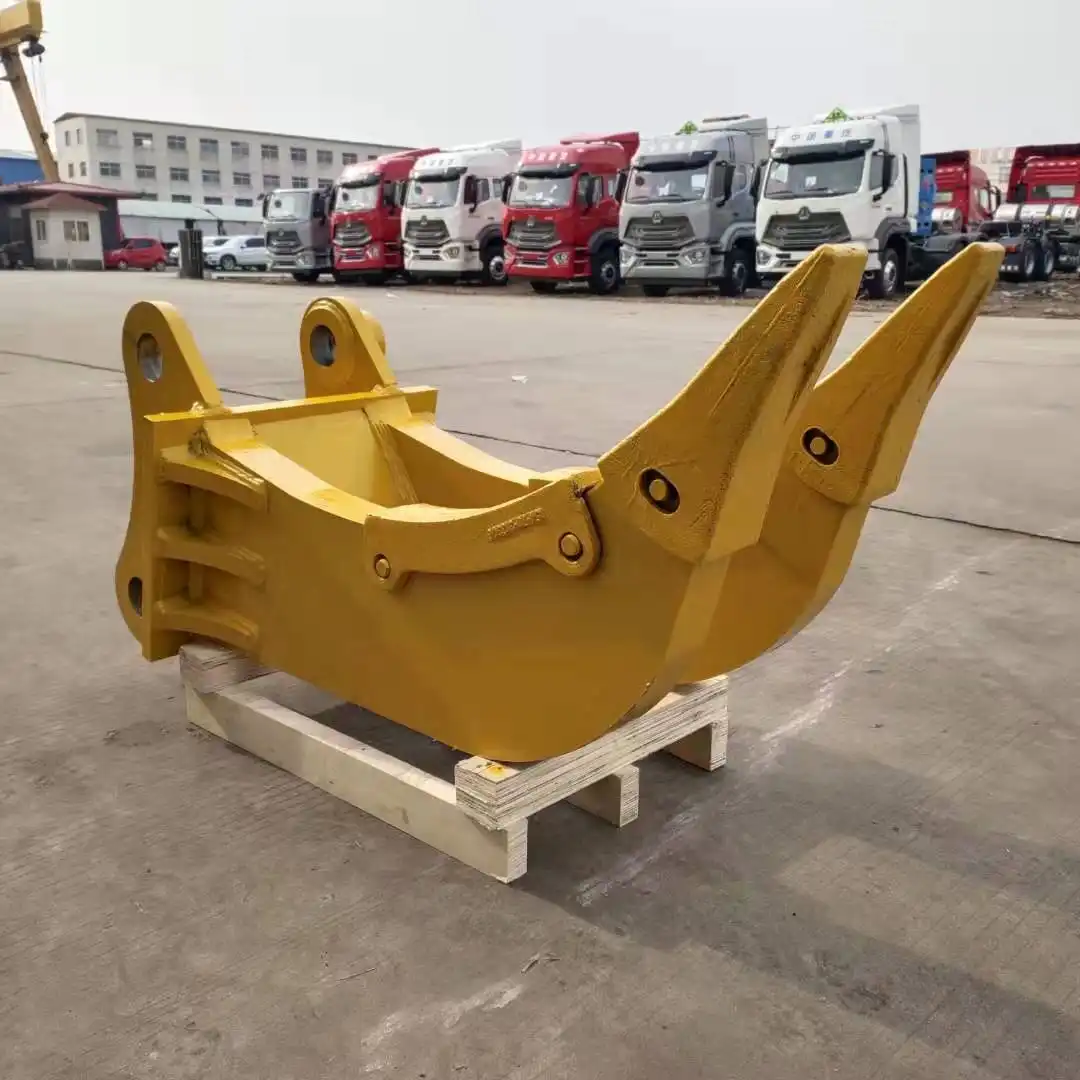
Extracting Tree Roots Efficiently
Land clearing operations frequently encounter extensive root systems that present significant obstacles to development projects. The excavator ripper offers superior performance in extracting these underground networks without requiring specialized equipment or extensive manual labor. By targeting primary root structures, operators can efficiently sever and extract roots with minimal site disturbance.
The process typically begins by identifying major root pathways radiating from stumps or previously removed trees. The ripper penetrates alongside these roots, using controlled force to break connections to surrounding soil while maintaining enough integrity for complete removal. This technique proves particularly valuable in railway expansion projects where thoroughness in root removal prevents future track deformation from decomposing organic material. The precision control available with excavator-mounted rippers minimizes collateral damage to surrounding utilities or structures that might be compromised during more aggressive removal methods.
Clearing Stumps from Development Areas
Stump removal represents one of the most challenging aspects of site preparation, often requiring significant time and specialized equipment. Excavator rippers provide an integrated solution that reduces both resource requirements and project timelines. The concentrated force application allows operators to systematically fragment stumps while simultaneously extracting major root components.
The approach involves an initial penetration alongside the stump circumference to sever lateral roots, followed by strategic undermining to access tap roots. This systematic fragmentation creates manageable sections that can be efficiently removed and processed. For extensive clearing projects supporting new railway corridors or industrial development, this methodology significantly accelerates project timelines compared to traditional stump grinding or removal techniques. The versatility of modern rippers allows them to address stumps across various size categories without requiring multiple specialized attachments.
Preparing Land for Agricultural Use
Converting previously forested areas to agricultural production requires thorough removal of below-ground biomass that might interfere with cultivation equipment or crop development. Excavator rippers provide agricultural developers with effective tools for addressing these conversion challenges while preserving valuable topsoil resources. The precision depth control allows operators to target woody material while minimizing disruption to soil horizons.
By systematically working through development areas, operators can extract roots and organic debris while maintaining site grading and drainage characteristics. This approach proves particularly valuable when preparing sites adjacent to railway infrastructure for agricultural buffer zones or complementary development. The efficiency of ripper attachments in this application significantly reduces the equipment fleet required for land conversion projects, offering substantial operational cost advantages over traditional clearing methods that might require multiple specialized machines.
FAQ
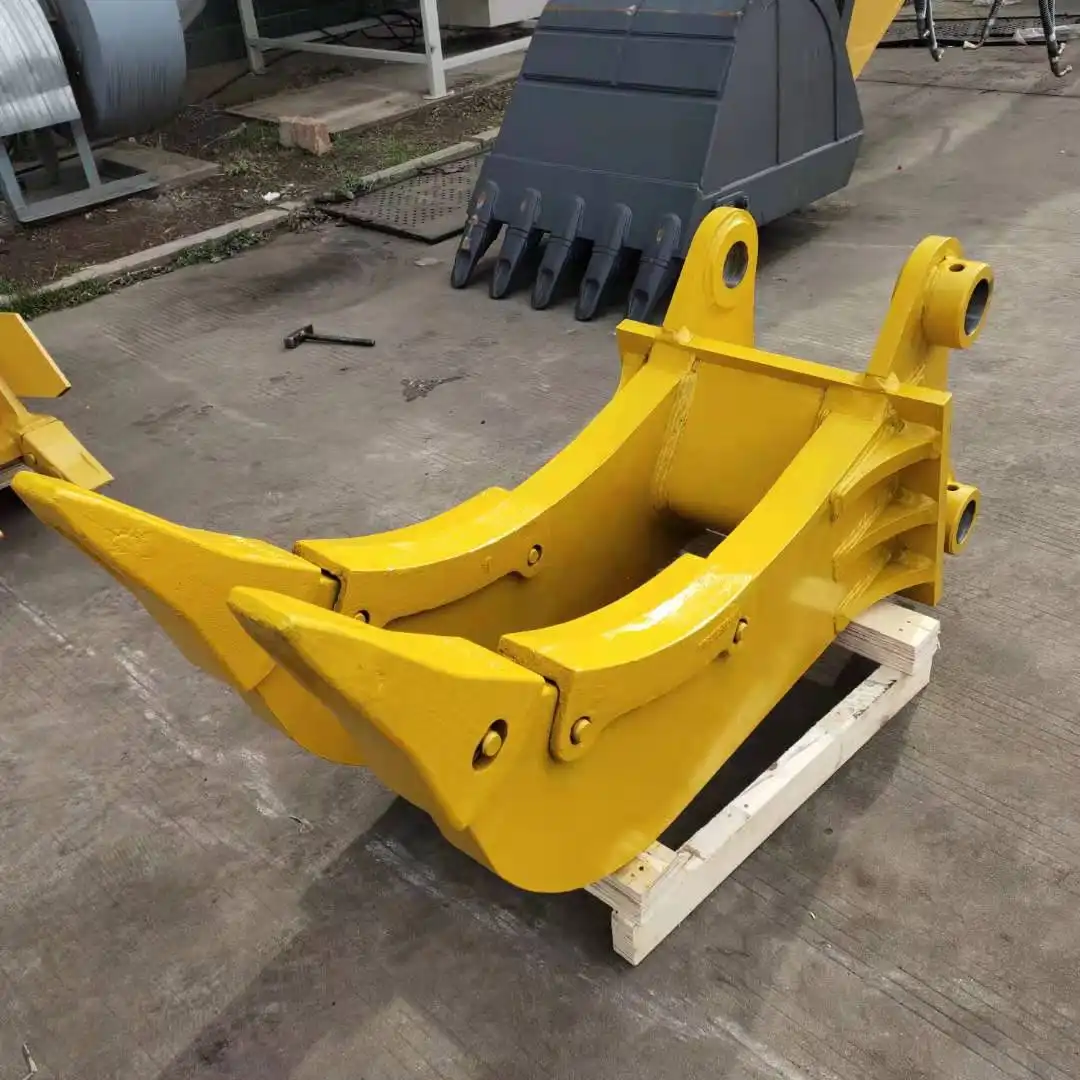
1. What size excavator is needed for a ripper attachment?
Ripper attachments are available for various excavator sizes, typically ranging from 1-ton mini excavators to 50-ton heavy machinery.
2 . Can excavator rippers replace dedicated rock breakers?
While excavator rippers excel at fracturing moderately hard materials like compacted soil, frozen ground, and degraded asphalt, they complement rather than replace dedicated hydraulic breakers for the hardest materials.
3. How does maintenance of a ripper compare to other attachments?
Ripper attachments generally require less maintenance than impact-based tools due to their simpler mechanical structure and fewer moving components. The primary maintenance focus involves regular inspection of the tooth/tip wear, hydraulic connections, and mounting hardware integrity.
4. Can one ripper design work for all applications?
While basic ripper designs share common principles, significant performance advantages come from selecting application-specific configurations. Single-tooth designs concentrate force for maximum penetration in hard materials, while multi-tooth variants provide wider coverage for scarification. Some manufacturers offer interchangeable teeth with specialized profiles for different material types. Adjustable angle capabilities allow operators to optimize penetration versus dragging performance based on specific project requirements. For organizations working across multiple industries or material conditions, modular ripper systems with interchangeable components provide the versatility to address varied applications without requiring multiple complete attachments.
Excavator Ripper For Sale

Ready to take your excavation projects to new heights with our top-notch excavator rippers? Tiannuo Machinery has got you covered. Our rippers attachment are meticulously designed to cater to a wide range of working weights and material strengths, from 3-5T to 31-35T machines. They also come in various board thicknesses and materials to meet diverse operational needs. Don't miss out on the opportunity to enhance your machinery's efficiency and performance. Reach out to us at arm@stnd-machinery.com, rich@stnd-machinery.com, or tn@stnd-machinery.com to learn more and get yours today.
References

Anderson, T. (2023). Modern Excavator Attachments in Heavy Construction. Construction Equipment Journal, 45(3), 78-92.
Zhang, L., & Patel, S. (2024). Railway Construction Equipment: Innovations and Applications. Railway Engineering Review, 31(2), 112-127.
Richardson, M. (2022). Ground Preparation Techniques for Infrastructure Development. Civil Engineering Quarterly, 76(4), 203-218.
Nakamura, H., & Johnson, K. (2023). Soil Scarification Methods for Environmental Restoration Projects. Journal of Land Reclamation, 28(1), 56-71.
Peterson, C. (2024). Hydraulic Attachments in Mining and Demolition Industries. Mining Technology Today, 39(2), 144-159.
About Author: Arm
Arm is a leading expert in the field of specialized construction and railway maintenance equipment, working at Tiannuo Company.

